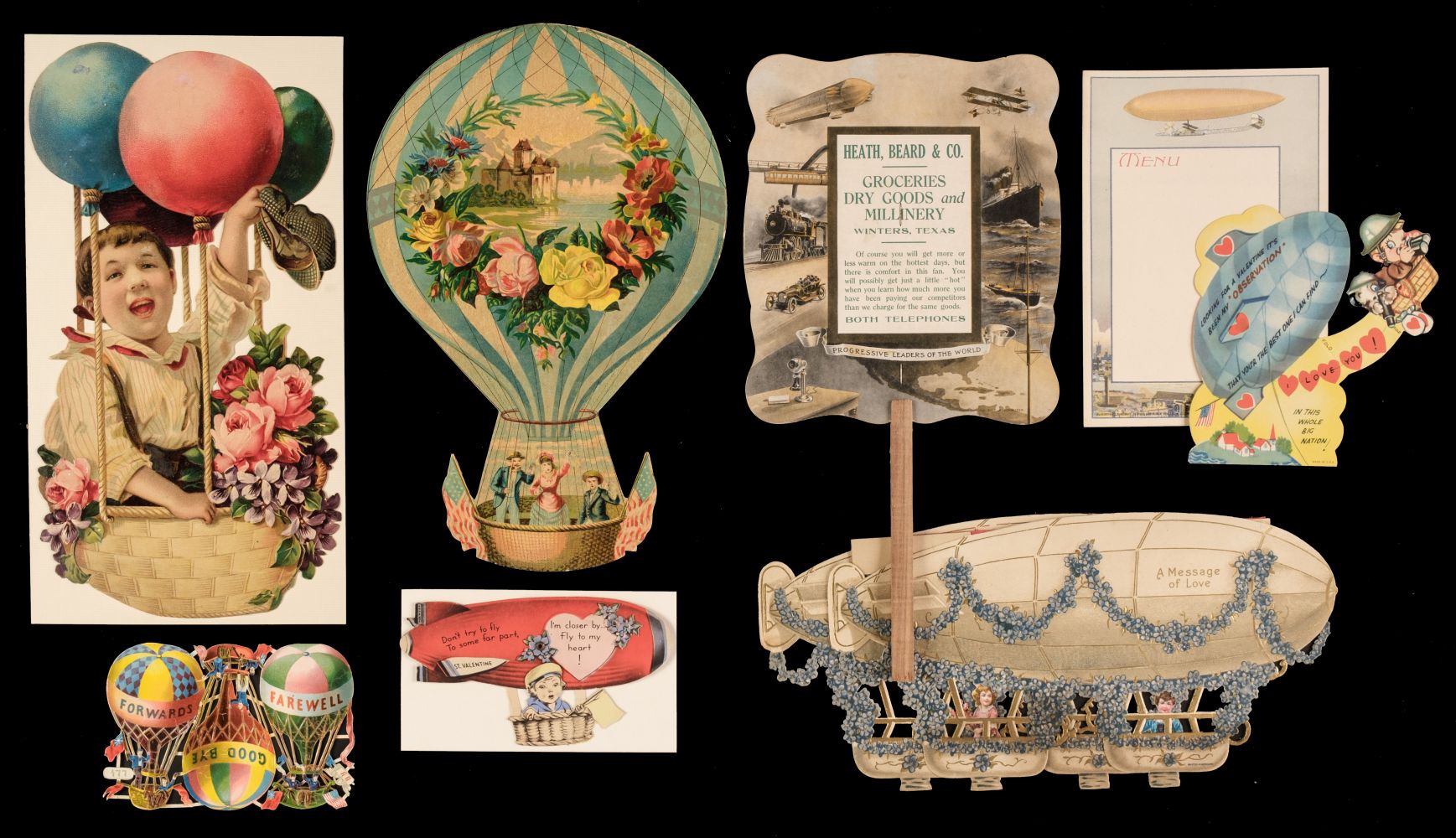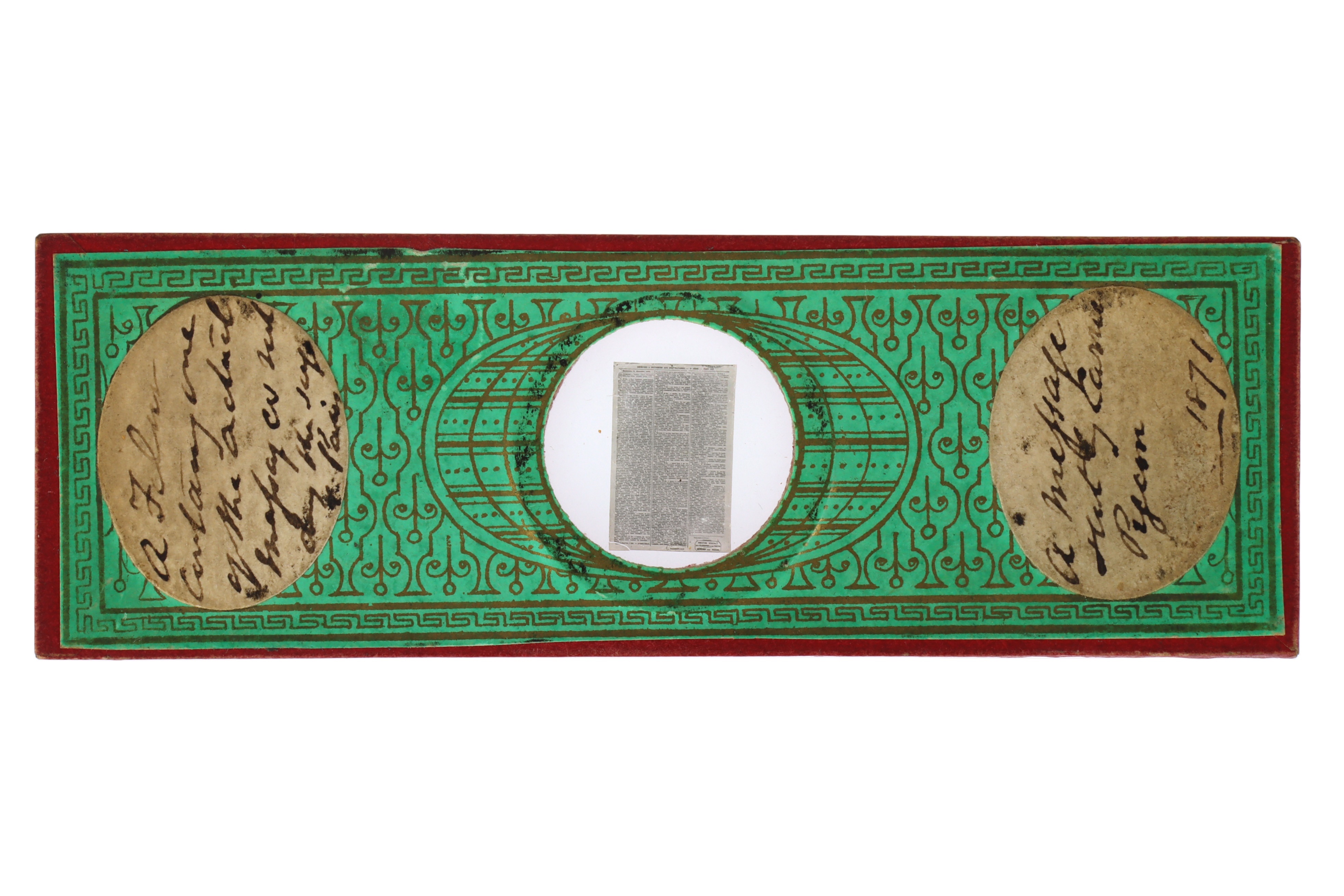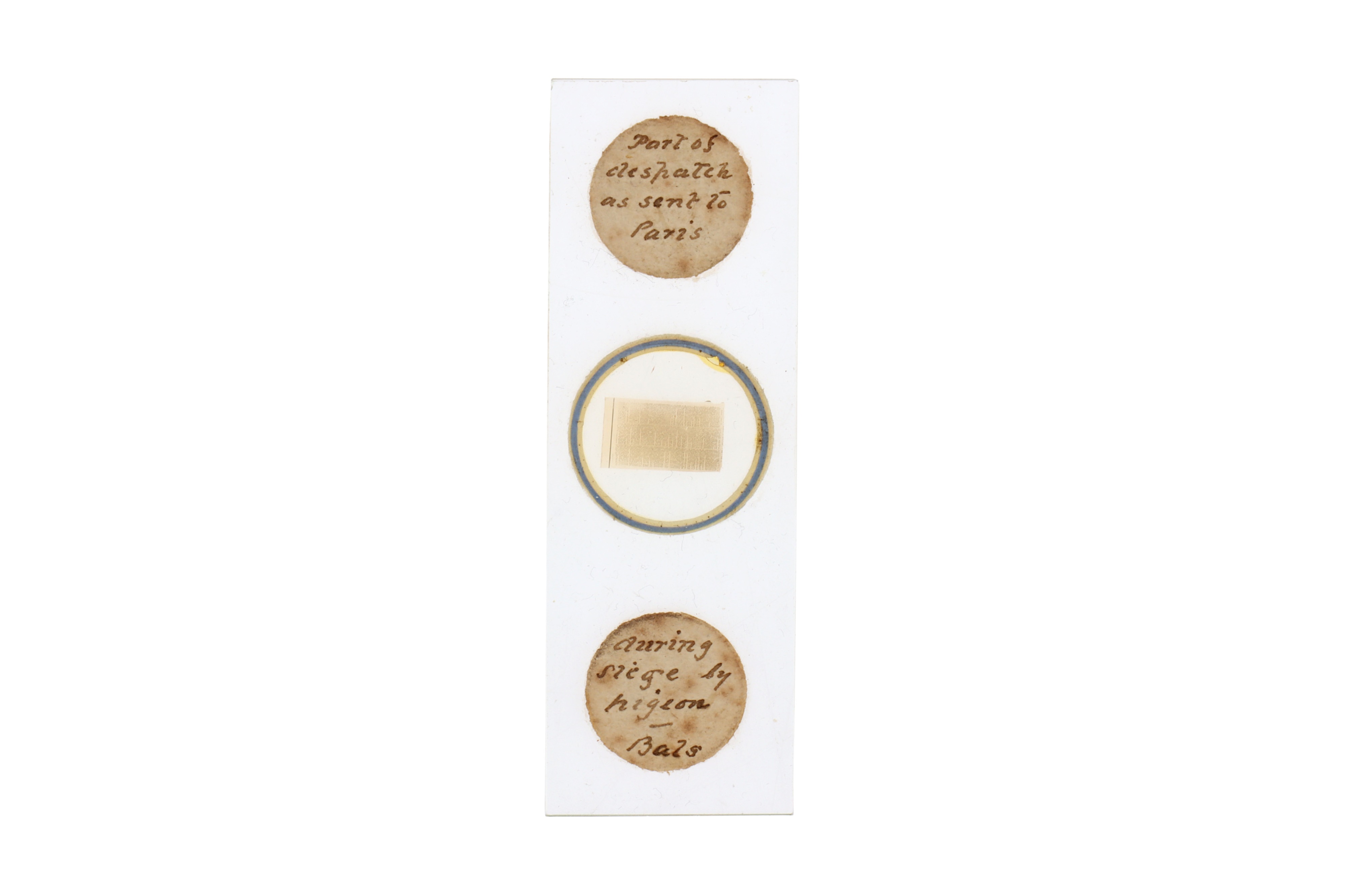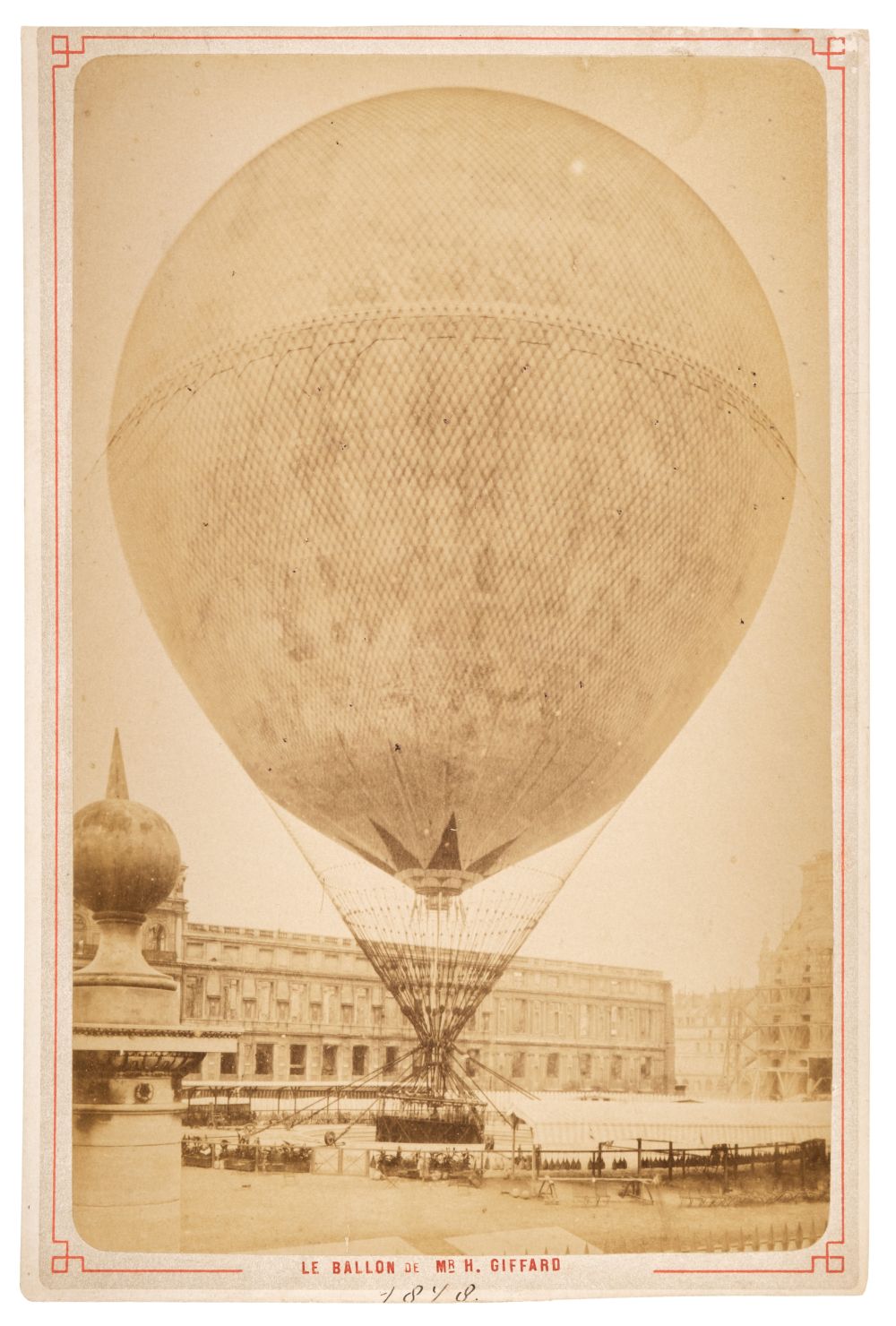Siege of Paris Balloon Post. An important and extensive archive of original manuscript correspondence and some printed documents relating to the establishment and organization of the new balloon post from Paris (the world's first airmail), by the Direction Generale des Postes under Germain Rampont, during the siege of Paris by the Prussian Army (September 19, 1870 to January 28, 1871), with further manuscript documents concerning the Paris Commune of 1871, as well as a number of subsequent retrospective administrative reports, approximately 650 items in total, circa 1870-1873, consisting of approximately 600 original official manuscript letters, many on headed letterpaper, reports, fair copies of contracts, descriptions by various inventors of prototype balloons and navigable air transport, permits, decrees, letters of recommendation, inventories of courrier pigeons and balloons used during the siege, accounts of flights undertaken, alternative methods of communication and delivery of post over the enemy lines by water, plus several contemporary printed newspapers (containing articles on balloons and aerostats), and a few contemporary printed booklets, etc., many letters and documents addressed to Germain Rampont, Head of the Direction Générale des Postes, his deputies, and a committee of experts on aerial navigation (including Hervé Mangon, balloonist and Ingénieur en chef des ponts et chaussées), etc., and including six signed letters by Nadar, five signed letters by Eugène Godard (26 December 1870-8 January 1871), numerous signed letters and notes by Jules Favre, ministre de l'interieur, Chassinat, De la Follye, Charles Delcourt, Louis Tellier, Louis Reyjal, Achille Brachet, Comte d'Oliveira, Bukaty, Francisco Antonio d'Almeida, the constructors Yon & Dartois, the photographer and inventor Réné Dagron (1819-1900), Albert Fernique (1841-1898), Gabriel Mangin, etc., mainly loose and divided into small folders with an outer paper wrapper (many inscribed with the subject matter contained in the correspondence), with one third loosely contained in a later cloth portfolio cover, folio (majority of documents between 36 x 28 cm and 18.5 x 12 cm) (Quantity: an archive) On 19 July 1870 France declared war on Prussia. It was a disastrous miscalculation. By 2 September the French emperor Napoleon III and his army had surrendered to the Germans at Sedan. By 19 September, the Prussians had surrounded Paris and laid siege to the city and its two million inhabitants. For France it was the end of empire. A new republican government abandoned the capital and headed south-west to Tours. As a consequence, with all post stopped, Paris had an urgent need to communicate with the outside world, especially the provincial départements. Having already used tethered balloons to observe the enemy, they decided to set up an air mail service. They sent out a call for every existing balloon in Paris and they set up shops for building more balloons. In all, 66 balloons left Paris carrying information to France beyond the German lines. Most flights were made at night. The balloons delivered hundreds of carrier pigeons for return mail. To bring mail back by pigeon, the French outside Paris used microscopic photography to reduce 16 pages of text to a 1 1/4 by 2 inch piece of film. Of the balloonists, two were lost at sea, and six were captured by the Germans when they landed. When others came down behind enemy lines, their pilots managed to deliver the mail anyway. One landed on an island off the coast of Brittany, another on the Scilly Isles. The most dramatic flight was one that landed in a Norwegian forest after an astonishing 875-mile trip. One flight carried the Minister of the Interior, who landed in an oak tree. This highly important archive contains unique manuscript documentation relating to the foundation of the Balloon Post, the rapid development and manufacture of dirigibles for transporting mail from the besieged city, requests for government off
Siege of Paris Balloon Post. An important and extensive archive of original manuscript correspondence and some printed documents relating to the establishment and organization of the new balloon post from Paris (the world's first airmail), by the Direction Generale des Postes under Germain Rampont, during the siege of Paris by the Prussian Army (September 19, 1870 to January 28, 1871), with further manuscript documents concerning the Paris Commune of 1871, as well as a number of subsequent retrospective administrative reports, approximately 650 items in total, circa 1870-1873, consisting of approximately 600 original official manuscript letters, many on headed letterpaper, reports, fair copies of contracts, descriptions by various inventors of prototype balloons and navigable air transport, permits, decrees, letters of recommendation, inventories of courrier pigeons and balloons used during the siege, accounts of flights undertaken, alternative methods of communication and delivery of post over the enemy lines by water, plus several contemporary printed newspapers (containing articles on balloons and aerostats), and a few contemporary printed booklets, etc., many letters and documents addressed to Germain Rampont, Head of the Direction Générale des Postes, his deputies, and a committee of experts on aerial navigation (including Hervé Mangon, balloonist and Ingénieur en chef des ponts et chaussées), etc., and including six signed letters by Nadar, five signed letters by Eugène Godard (26 December 1870-8 January 1871), numerous signed letters and notes by Jules Favre, ministre de l'interieur, Chassinat, De la Follye, Charles Delcourt, Louis Tellier, Louis Reyjal, Achille Brachet, Comte d'Oliveira, Bukaty, Francisco Antonio d'Almeida, the constructors Yon & Dartois, the photographer and inventor Réné Dagron (1819-1900), Albert Fernique (1841-1898), Gabriel Mangin, etc., mainly loose and divided into small folders with an outer paper wrapper (many inscribed with the subject matter contained in the correspondence), with one third loosely contained in a later cloth portfolio cover, folio (majority of documents between 36 x 28 cm and 18.5 x 12 cm) (Quantity: an archive) On 19 July 1870 France declared war on Prussia. It was a disastrous miscalculation. By 2 September the French emperor Napoleon III and his army had surrendered to the Germans at Sedan. By 19 September, the Prussians had surrounded Paris and laid siege to the city and its two million inhabitants. For France it was the end of empire. A new republican government abandoned the capital and headed south-west to Tours. As a consequence, with all post stopped, Paris had an urgent need to communicate with the outside world, especially the provincial départements. Having already used tethered balloons to observe the enemy, they decided to set up an air mail service. They sent out a call for every existing balloon in Paris and they set up shops for building more balloons. In all, 66 balloons left Paris carrying information to France beyond the German lines. Most flights were made at night. The balloons delivered hundreds of carrier pigeons for return mail. To bring mail back by pigeon, the French outside Paris used microscopic photography to reduce 16 pages of text to a 1 1/4 by 2 inch piece of film. Of the balloonists, two were lost at sea, and six were captured by the Germans when they landed. When others came down behind enemy lines, their pilots managed to deliver the mail anyway. One landed on an island off the coast of Brittany, another on the Scilly Isles. The most dramatic flight was one that landed in a Norwegian forest after an astonishing 875-mile trip. One flight carried the Minister of the Interior, who landed in an oak tree. This highly important archive contains unique manuscript documentation relating to the foundation of the Balloon Post, the rapid development and manufacture of dirigibles for transporting mail from the besieged city, requests for government off












/29996/Photo3%20data.jpg)

Testen Sie LotSearch und seine Premium-Features 7 Tage - ohne Kosten!
Lassen Sie sich automatisch über neue Objekte in kommenden Auktionen benachrichtigen.
Suchauftrag anlegen